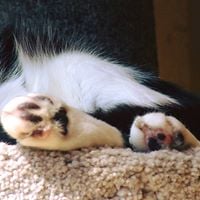What builds up inside kettles due to a chemical reaction?
Limescale is a hard, chalky deposit, consisting mainly of calcium carbonate (CaCO3). It often builds up inside kettles, boilers, and pipework, especially that for hot water. It is also often found as a similar deposit on the inner surfaces of old pipes and other surfaces where "hard water" has evaporated.
The color varies from off-white through a range of greys and pink or reddish browns, depending on the other minerals present. Iron compounds give the reddish-browns.
In addition to being unsightly and hard to clean, limescale can seriously damage or impair the operation of various plumbing and heating components. Descaling agents are commonly used to remove limescale. Prevention of fouling by scale build-up relies on the technologies of water softening.
By the Middle Ages the limestone-like limescale accretions from the inside of the aqueduct were particularly desirable as a building material, called "Eifel marble" in an area with little natural stone. In the course of operation of the aqueduct, many sections had a layer as thick as 200 millimetres (7.9in). The material had a consistency similar to brown marble and was easily removable from the aqueduct. Upon polishing, it showed veins, and it could also be used like a stone board when cut flat. Use of "Eifel marble" can be seen as far east as Paderborn and Hildesheim, where it was used in the cathedrals. Roskilde Cathedral in Denmark is the northernmost location of its use, where several gravestones are made of it.
More Info:
en.wikipedia.org








